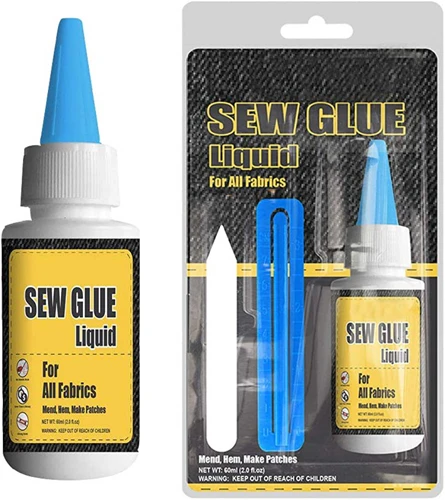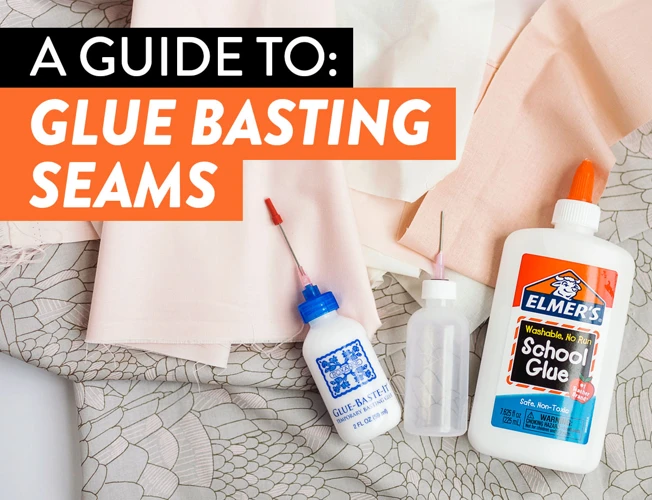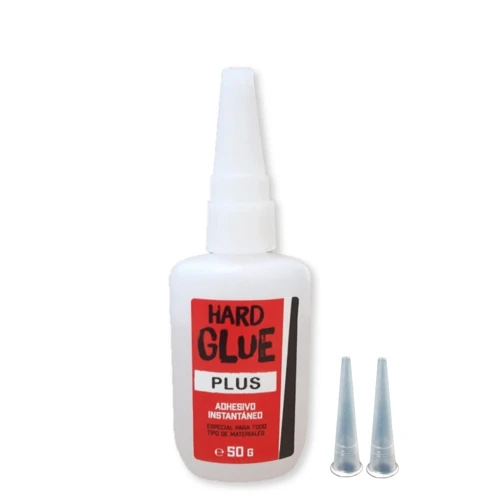Do you want to make putty, but don’t have glue, borax, or cornstarch? Don’t worry, you can still create your own putty with a few simple ingredients and some mixing. In this guide, we’ll show you how to make putty without glue or borax or cornstarch step-by-step. You might be surprised by how easy it is to create your own putty without these common materials. So gather your ingredients and let’s get started!
What You’ll Need
Before you start making putty without glue or borax or cornstarch, it’s important to gather the necessary ingredients and tools. You might already have most of the items you need at home, but it doesn’t hurt to double-check. Here’s a list of what you’ll need to make the putty. Don’t worry, it’s just a few things and you might have them at home already!
Ingredients
When making putty without glue, borax or cornstarch, you’ll need a few simple ingredients. All of these ingredients are readily available in your kitchen and can be easily mixed together to create your desired putty consistency. Here is a list of the ingredients you will need:
- All-purpose flour: This is the main ingredient you will need for this recipe.
- Vegetable oil: This is what will make your putty stretchy and pliable.
- Food coloring: Optional, but it will add some fun color to your putty.
- Cornstarch: You can add this to your recipe to make the putty less sticky, but this recipe doesn’t require it.
Make sure to use all-purpose flour, as other types of flour may not work as well. As for the food coloring, you can use any color you like, or even a combination of colors to make unique shades. If you want your putty to be less sticky, you can add a tablespoon or two of cornstarch to the recipe. Remember that this ingredient is optional, so feel free to use it depending on your preference.
If you need more information about what glue to use on wall, you can check out our other article What Glue to Use on Wall for a detailed guide.
Tools and Materials
Tools and Materials:
To make putty without glue, borax or cornstarch, you will need the following tools and materials:
- All-purpose flour – 1 cup
- Vegetable oil – 1 tablespoon
- Food coloring – a few drops
- Bowl – 1
- Spoon or spatula – 1
- Plastic bag – 1
The flour will be the main ingredient for this putty recipe, and you can use any type of flour for this purpose. The vegetable oil will be used to add a binding agent to the putty, while the food coloring will give it a nice color. You will also need a bowl to mix the ingredients, and a spoon or spatula to stir. Finally, a plastic bag can be used to store the putty later.
Make sure that you have all the tools and materials ready before you start making the putty. And, if you’re missing any of these items, you can easily find them at your local grocery or craft store.
Step-by-Step Guide
Now that you have gathered all the necessary ingredients and tools, it’s time to dive into the step-by-step process of making putty without glue, borax, or cornstarch. Get ready to roll up your sleeves and get your hands dirty as we uncover the secrets to making your own putty. Don’t worry, we’ll guide you every step of the way. So let’s begin! And if you’re interested in other DIY crafts, check out our guide on how to decoupage on wood with PVA glue.
Step 1: Mixing the Flour and Oil
Step 1: Start by getting a mixing bowl and adding 1 cup of flour and 1/2 cup of vegetable oil into it. You can use any type of flour that you have available at home, such as all-purpose flour or wheat flour.
Tip: If you want to make a larger quantity of putty, just increase the amount of flour and oil you use in proportion. For example, if you want to make a double batch, use 2 cups of flour and 1 cup of oil.
Important warning: Please keep in mind that as with any kitchen activity, it’s important to be careful and take safety precautions when preparing this putty. Make sure to wash your hands before you start, and try to avoid getting the flour and oil mixture on your clothes or nearby surfaces as it can be difficult to clean.
Supply checklist:
- Mixing bowl
- Flour (1 cup)
- Vegetable oil (1/2 cup)
- Spoon for mixing
Once you have all the required materials, you can move on to the next step.
Click here if you need some advice on how to make your glue thicker.
Step 2: Adding the Food Coloring
Step 2: Adding the Food Coloring
After mixing the flour and oil, you can now add some color to your putty. This step is optional but can make your putty more fun and exciting to play with. To add color, you will need food coloring.
| Ingredients: | Tools and Materials: |
|---|---|
| – Food coloring | – Mixing bowl |
| – Spoon |
When choosing food coloring, you can use any color you want. You can mix and match different colors to create your desired hue. However, make sure to only use food coloring and not other types of dyes as they may not be safe for you to touch or play with.
To add the food coloring, start by dropping a few drops of your desired color onto the flour and oil mixture. You can add more or less depending on how light or dark you want the color to be. Remember, a little goes a long way, so start with just a few drops.
Then, use a spoon or your hands to mix the food coloring into the mixture. Knead the putty until the color is evenly distributed and there are no streaks or lumps of food coloring in the mixture.
Pro tip: If you want to create different shades of color, you can separate the putty into smaller portions and mix different amounts of food coloring into each portion.
Adding food coloring is a quick and easy way to personalize your putty. Plus, it can make it more fun and exciting to play with. So, go ahead and add some color to your putty today!
If you want to learn how to make a paper kunai without tape or glue, check out our step-by-step guide here.
Step 3: Mixing and Kneading
Once you have added the food coloring to the mixture, it’s time to start mixing and kneading the putty. It’s important to note that the putty will be very sticky at first, but keep working it until it becomes smooth and pliable.
To mix and knead the putty, follow these steps:
- Use a spoon or spatula to stir the mixture until it starts to clump together. Then, use your hands to mix the putty thoroughly.
- If the putty is too sticky, sprinkle some flour onto your work surface and knead it into the mixture. Keep adding flour until the putty is no longer sticky.
- Once the putty is smooth and pliable, you can use it just like store-bought putty. Stretch it, roll it into balls, or use it to pick up small objects.
Remember that the consistency of the putty will depend on the ratio of flour and oil you used. If the putty is too dry, add a few drops of oil. If it’s too sticky, add more flour.
It’s also a good idea to store the putty in an airtight container to keep it from drying out. This will make it last for several weeks, if not months. If the putty starts to dry out or harden, simply add a few drops of oil and knead it back to its original texture.
Now that you’ve successfully made putty without glue, borax, or cornstarch, you can have fun experimenting with different variations to make your own unique putty creations! But if you need to use glue, check out this guide to mixing different types of glue to get the perfect consistency for your project.
Variations
Once you’ve mastered the basic recipe for putty without glue or borax or cornstarch, why not take things up a notch? With a few simple additions, you can create putty that glows in the dark or shimmers with glitter. These variations are perfect for kids’ parties, science projects, or just for a fun afternoon activity. Let’s explore how to make these creative twists on putty using some additional ingredients. But before we dive in, grab some glue sticks and visit our article on what is the mass of a glue stick, just in case you’ll need them later.
Glow-in-the-Dark Putty
For those who want to take the fun up a notch, you can make glow-in-the-dark putty with just a few additional materials. This variation is sure to mesmerize kids and adults alike. Here’s what you’ll need to make glow-in-the-dark putty:
- Glow-in-the-dark paint: You can find this type of paint at craft stores or online. Make sure it’s a paint that can be mixed with other substances before purchasing it.
- Black light: This is essential to making the putty glow. You can purchase small black lights online or at some stores.
Now, you can follow the same steps as before, but with one added step:
- Follow the first two steps of the original recipe.
- Add a few drops of the glow-in-the-dark paint to the mixture and stir until the color is evenly distributed. You can add more or less depending on how bright you want the putty to glow.
- Continue with the original recipe’s third step of mixing and kneading until the putty becomes more solid and less sticky.
- Charge the putty under the black light for a few minutes to make it glow. The longer you charge it, the longer it will glow.
Just like with the original recipe, make sure to keep the putty stored in an airtight container when not in use. This will keep it from drying out and preserve the glow-in-the-dark effect for future playtime.
Glow-in-the-dark paint is a fun addition to any DIY project, and adding it to homemade putty is no exception. If your kids are fascinated by this variation, try incorporating it into other craft projects as well.
Glitter Putty
Adding glitter to your putty can make it more fun and exciting to play with. To make glitter putty, follow the same steps as the basic putty recipe with a few modifications.
Materials:
- All-purpose flour
- Vegetable oil
- Fine glitter
- Food coloring
- Bowl
- Spoon
Step 1: In a bowl, combine 1 cup of all-purpose flour and ½ cup of vegetable oil. Mix until well blended.
Step 2: Add in a few drops of food coloring and mix well. You can use any color you like to match the color of your glitter.
Step 3: Mix in the glitter. You can use as much or as little as you want, but 1 tablespoon of fine glitter should be enough. Mix the glitter well into the dough. If the dough is too sticky, add more flour.
Step 4: Knead the glitter putty for a few minutes, until it becomes smooth and stretchy.
That is all it takes to make glitter putty! Play with it, stretch it, see how much it can be stretched, make shapes and figures, the possibilties are endless.
Precautions: Glitter can be messy and difficult to clean, so it would be better to play with the glitter putty on a clean surface that can be easily cleaned later. Also, keep the putty away from your mouth to avoid accidentally ingesting glitter.
Adding glitter to the putty is a fun way to make it more interesting and exciting for kids. However, if you want to avoid using traditional glitter, which can be harmful to the environment, you can use eco-friendly glitter to make your putty. Now you have a shiny, sparkly putty to play with!
If you’re interested in learning more about using glue in your crafts, check out how to use glue on bails.
Storage and Precautions
After you have made your putty, it is important to store it properly to ensure its longevity. Avoid leaving the putty exposed to air for an extended period of time, as this can dry it out and make it less pliable and fun to play with. It is best to store your putty in an airtight container, such as a plastic resealable bag or a jar with a lid.
Another precaution to take is to keep your putty away from small children and pets. Although this putty is non-toxic, it is not meant to be eaten and could pose a choking hazard if not used properly. It is a good idea to supervise children while they play with the putty to ensure they are using it safely and appropriately.
If you plan on making different variations of putty, consider labeling each airtight container with the type of putty inside and the date it was made. This will help you keep track of your putty and ensure that you are using it while it is still fresh.
Lastly, if you find that you are having difficulty removing the putty from surfaces or fabrics, a common household glue remover should do the trick. When you are ready to dispose of the putty, it is important to avoid pouring it down the drain, as it may cause blockages. Instead, throw it away in the trash where it can be safely and easily disposed of.
With these simple precautions in mind, you can make putty without glue, borax, or cornstarch and enjoy hours of fun and creativity with this easy-to-make, inexpensive DIY toy.
Conclusion
In conclusion, making putty without glue or borax or cornstarch is not only possible, but it can also be a fun and educational activity to do with kids and adults alike. Using only flour, oil, and food coloring, you can create a versatile and moldable substance that can provide hours of entertainment.
The best part is that this putty recipe can be easily customized to suit your preferences by adding variations such as glitter or glow-in-the-dark features. You can let your imagination run wild and create different colors and textures that will suit your needs.
However, it is important to keep in mind that this homemade putty is not meant to be ingested and should be kept away from pets and small children. Moreover, it may not have the same durability as store-bought putty, so make sure to store it properly in an airtight container.
Overall, making putty without glue or borax or cornstarch is a great way to explore your creativity and pass the time. And if you’re looking for more DIY projects, why not try gluing a puzzle together? Check out our article on how to glue a puzzle for some fun and exciting puzzle ideas.
Frequently Asked Questions
Can I substitute another oil for vegetable oil in this recipe?
Yes, you can use any neutral oil in place of vegetable oil. Some good options include canola oil, sunflower oil, and grapeseed oil.
Do I need to use a specific type of flour?
All-purpose flour works best for this recipe, but you can try using other types of flour such as wheat flour or rice flour if you prefer.
What type of food coloring should I use?
You can use liquid or gel food coloring. Gel food coloring is more concentrated, so you will need less of it.
Can I add scent to the putty?
Yes, you can add a drop or two of essential oil for a pleasant scent. Just be sure to mix it in well.
Can I add more flour if the putty is too sticky?
If the putty is too sticky, add a small amount of flour at a time and knead it into the dough. Be careful not to add too much flour or the putty will become too dry.
How long will the putty last?
If stored properly in an airtight container, the putty should last for several weeks.
Can I make this putty with my kids?
Yes, this is a fun and easy activity to do with kids. Just be sure to supervise them when handling the hot oil.
Is this putty safe to play with?
Yes, this putty is safe to play with. However, be sure to keep it away from small children or pets who may try to ingest it.
Can I make this putty without a mixer?
Yes, you can mix the ingredients by hand. Just be prepared to knead the dough for a bit longer to ensure it is well-mixed.
Is this putty environmentally friendly?
This putty is made from simple and natural ingredients, but it is not fully biodegradable. Be sure to dispose of it properly in the trash.


